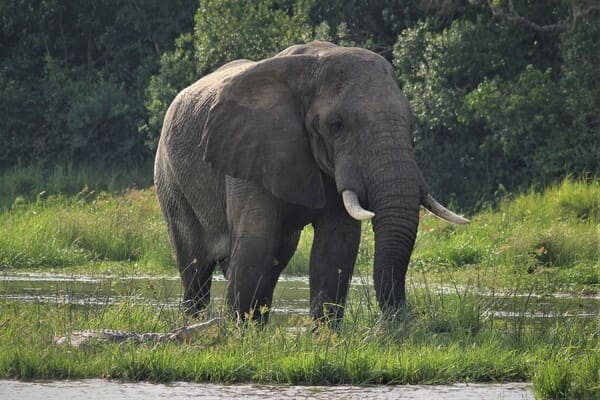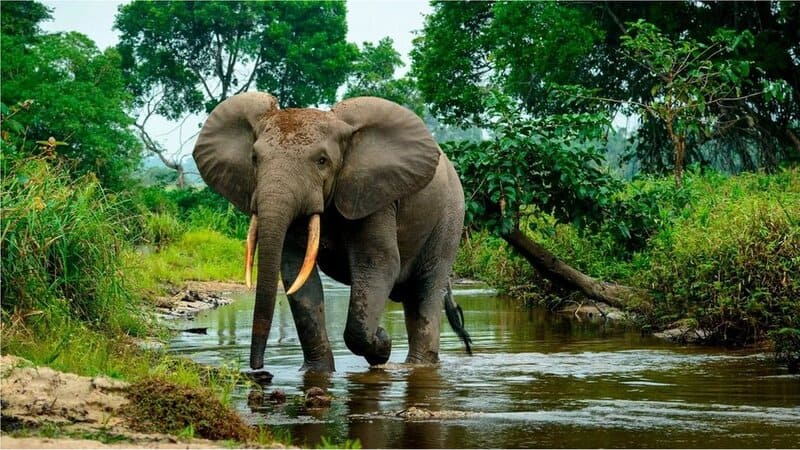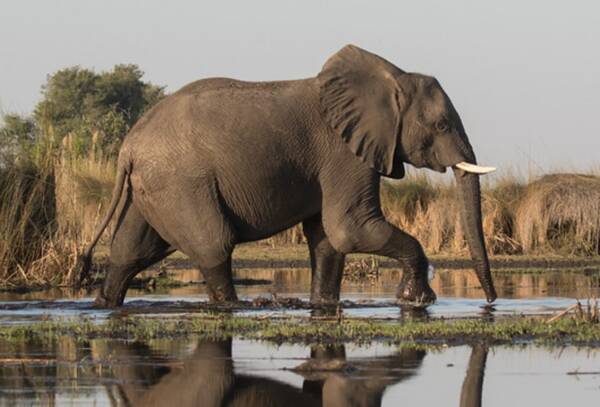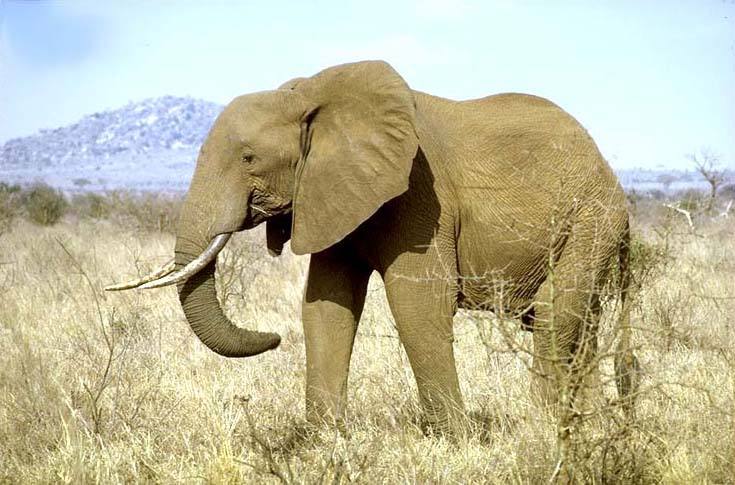woolly mammoth
IUCN
NTBasic Information
Scientific classification
- name:woolly mammoth
- Scientific Name:
- Outline:Proboscidea
- Family:woolly-mammoth
Vital signs
- length:15 feet
- Weight:13,200 lbs
- lifetime:60-80 years
Feature
Distribution and Habitat
Appearance
Details
Table of Contents
1. Introduction: The Woolly Mammoth’s Legacy
The Woolly Mammoth, scientifically known as Mammuthus primigenius, was a majestic creature that roamed the Earth during the Pleistocene epoch, roughly 400,000 to 4,000 years ago. It became a symbol of the Ice Age and was one of the most fascinating megafauna species that ever existed. This article delves into the world of the woolly mammoth, exploring its life, extinction, fossils, and even the modern efforts to bring it back through advanced science.
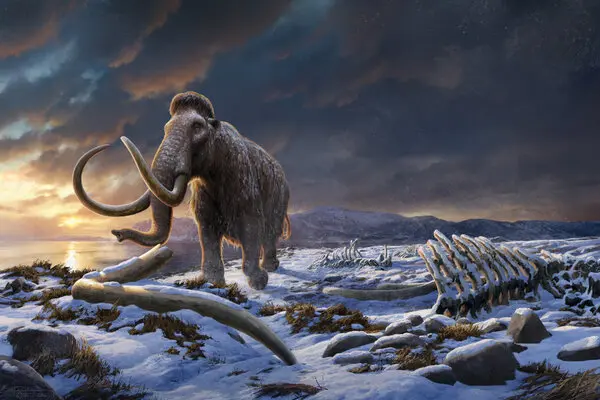
2. What is a Woolly Mammoth?
A Woolly Mammoth was a large, herbivorous mammal closely related to today’s Elephants-Are-Endangered.html">elephants. It was known for its thick fur coat and long tusks, which helped it survive the harsh, cold climates of the Ice Age. These creatures were part of a larger group known as megafauna, which included large animals such as giant sloths and saber-toothed cats. The mammoth’s main adaptation to the extreme cold was its woolly fur and layer of fat, which kept it insulated against the freezing temperatures of its environment.
3. Physical Characteristics of the Woolly Mammoth
Woolly mammoths were massive creatures, standing about 12 feet tall at the shoulder and weighing up to 6,000 kg (13,200 lbs). Their most distinguishing feature was their long, spiral-shaped tusks, which could grow up to 15 feet long. These tusks were primarily used for defense, foraging, and fighting. The mammoth's fur coat was another standout feature, consisting of long, coarse hair that covered its body, as well as a shorter, dense undercoat to protect it from cold.
4. Woolly Mammoth’s Habitat and Life During the Ice Age
Woolly mammoths lived in cold, tundra regions during the Pleistocene epoch, particularly in areas like Siberia and North America. They roamed across the Arctic tundra and steppe habitats, often in large herds. Mammoths fed on a variety of plant life, including grasses, shrubs, and woody plants, using their tusks to forage for food under the snow. Their adaptations helped them survive in these frigid environments, and they played a crucial role in shaping the ecosystem during the Ice Age.
5. Extinction: What Happened to the Woolly Mammoth?
The woolly mammoth went extinct around 4,000 years ago, likely due to a combination of climate change and overhunting by early humans. As the Ice Age ended, the climate warmed, and the mammoth’s habitat began to shrink, contributing to its decline. Humans, who had been hunting these animals for their meat, ivory, and skins, may have contributed significantly to their extinction. It’s believed that small, isolated populations of mammoths survived in places like Wrangel Island until around 1650 BC.
6. What Was the Lifespan of a Woolly Mammoth?
Answer: Woolly mammoths had a lifespan similar to that of modern Elephants-Are-Endangered.html">elephants, typically living around 60 to 80 years. This lifespan was influenced by factors such as climate, food availability, and predation. However, like their modern relatives, mammoth calves faced high mortality rates during their early years, especially in harsh conditions. Adult mammoths, especially those living in herds, had a better chance of surviving into old age, though they could still face dangers from predators like early humans or extreme weather conditions.
7.The Fascinating Science of Woolly Mammoth Fossils
Woolly mammoth fossils are often found preserved in the permafrost of Siberia, and these frozen carcasses provide scientists with a wealth of information about the species. Not only do these fossils provide insight into the mammoth's physical traits, but they also offer clues about its diet, behavior, and environment. In some cases, mammoth DNA has been extracted from these fossils, leading to groundbreaking studies in paleogenomics and even attempts to clone the mammoth using modern technology.
8. Modern Research: Can We Bring the Woolly Mammoth Back?
One of the most exciting areas of modern research is the possibility of de-extincting the woolly mammoth. Using advanced techniques like CRISPR gene editing, scientists are exploring the potential of genetic engineering to bring the mammoth back to life. The idea is to use the elephant genome as a base and introduce woolly mammoth genes, particularly those responsible for adaptations like their fur coat and cold resistance. However, there are significant ethical concerns and environmental risks associated with resurrecting a species that has been extinct for thousands of years.
9. The Woolly Mammoth in Human History and Culture
The woolly mammoth has left a significant mark on human history and culture. Early humans hunted them for food and raw materials, and the mammoth's ivory tusks were used to make tools and art. Cave paintings of woolly mammoths can be found in locations across Europe, suggesting that these creatures played an important role in prehistoric human life. The mammoth has since become a symbol of the Ice Age and the power of megafauna.
10. Ethical and Environmental Concerns of De-Extinction
While the idea of bringing back the woolly mammoth through cloning or gene editing is fascinating, it raises serious ethical concerns. Should humans play a role in resurrecting extinct species, especially those like the mammoth that disappeared due to natural climate changes? There are also questions about whether reintroducing woolly mammoths into the wild would have unintended effects on modern ecosystems. Would they disrupt the balance or help restore it? These are critical questions that researchers must carefully consider.
11. Conclusion: The Woolly Mammoth's Impact on the World
The woolly mammoth’s legacy continues to captivate our imagination. From its role as an icon of the Ice Age to its status as a symbol of extinction and de-extinction efforts, the mammoth plays a vital part in understanding both our past and the future of conservation science. Whether or not we succeed in bringing back the woolly mammoth, its story highlights the challenges of species survival, the power of adaptation, and the delicate balance of ecosystems.
By understanding the woolly mammoth, we learn more about the Pleistocene epoch, the Ice Age, and the potential for scientific breakthroughs in genetics and conservation. As we continue to study this iconic creature, we may uncover even more about our own world and the creatures with whom we share it.
FAQ
1. What Caused the Extinction of the Woolly Mammoth?
Answer: The extinction of the woolly mammoth is believed to be caused by a combination of factors, including climate change and overhunting by early humans. As the Earth warmed up at the end of the Ice Age, the mammoth's cold tundra habitat shrank. This environmental change, combined with hunting pressures, led to the decline of the woolly mammoth. Some small populations managed to survive on isolated islands like Wrangel Island until around 1650 BC, but eventually, they disappeared as well.
2. How Big Were Woolly Mammoths?
Answer: Woolly mammoths were massive creatures. Adult males stood about 12 feet (3.6 meters) tall at the shoulder and weighed up to 6,000 kilograms (13,200 pounds). Their long tusks could grow up to 15 feet (4.5 meters), and their fur-covered bodies made them look even larger. Females were generally smaller than males, but they were still substantial in size.
3. What Did Woolly Mammoths Eat?
Answer: Woolly mammoths were herbivores, meaning they ate plants. They primarily fed on grasses, shrubs, mosses, and woody plants. Their tusks helped them forage for food by digging under snow to find vegetation. They were well-adapted to their environment, using their large molars to grind tough, fibrous plants.
4. Can Woolly Mammoths Be Brought Back to Life?
Answer: There are ongoing efforts in genetic research to bring back the woolly mammoth using techniques like CRISPR gene editing. Scientists are exploring whether they can reintroduce woolly mammoth genes (such as those for cold resistance and thick fur) into the genome of modern elephants. However, this process is still in its experimental stages and raises significant ethical concerns about the implications for ecosystems and animal welfare.
5. Where Are Woolly Mammoth Fossils Found?
Answer: Woolly mammoth fossils are commonly found in Siberia, particularly in the permafrost of northern regions like the Russian Arctic. These well-preserved fossils, including mammoth carcasses, teeth, and bones, have been discovered frozen in ice for thousands of years. Mammoth fossils have also been found in North America and parts of Europe, providing valuable information about their biology and environment.

